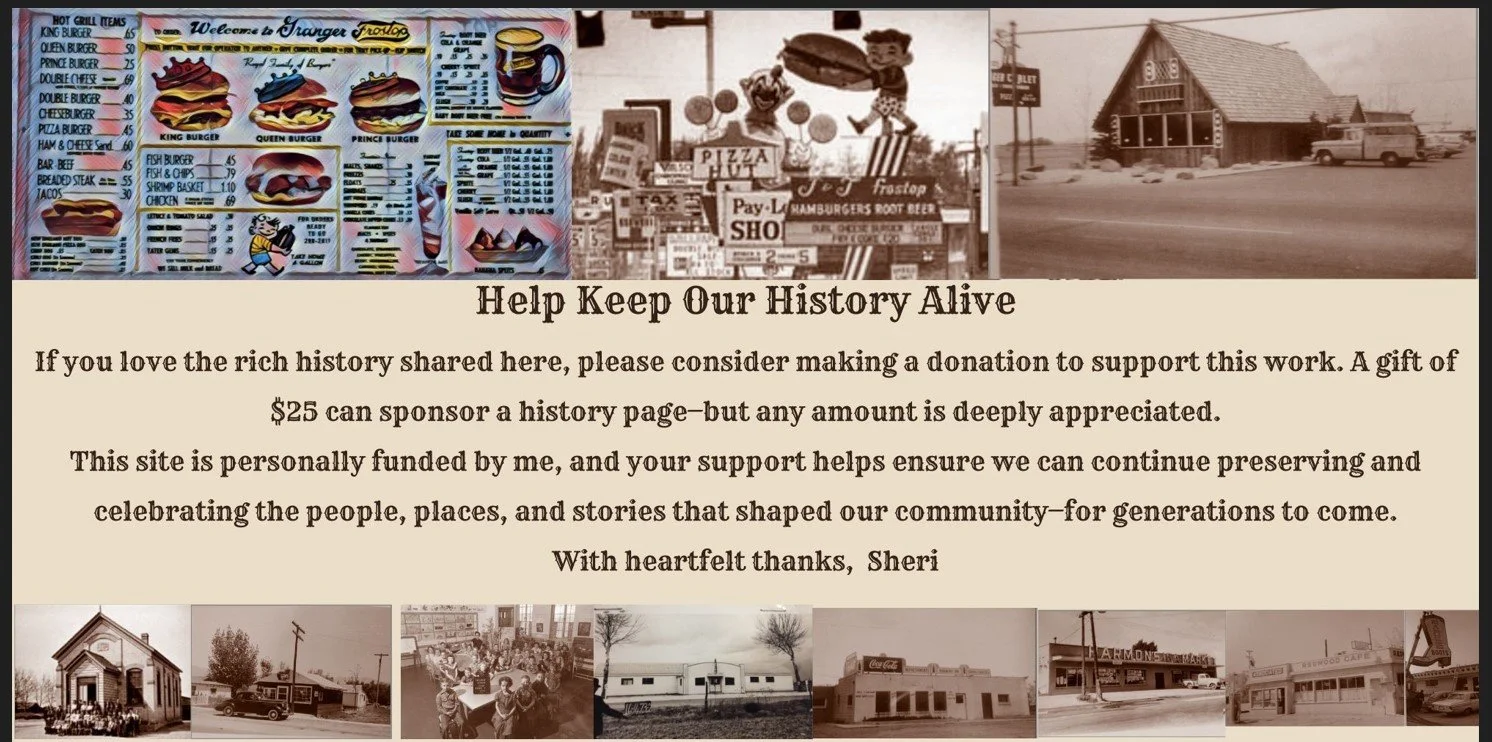The Kendrick Family Homestead: Life and Legacy at 3100 South and 2700 West
The Kendrick home was built tin 1925: Look at the little child in the picture. You can see Decker Lake to the side .
he Old Kendrick Home — A Center of Family, Work, and Care
The Kendrick home stood near 3100 South and 2700 West, on the north side of what was then open Granger farmland. After Tom and May Kendrick married in 1896, they expanded the original four-room homestead by adding a large new kitchen, dining, and family room on the north side. This new room, measuring eighteen by twenty-four feet, became the true heart of the home—warm and busy, lit by four windows and bustling with daily chores and laughter.
The kitchen was practical yet welcoming: the stove anchored the north wall, flanked by a rocking chair and a cozy lounge. Two sturdy tables—one for daily meals and a larger one for family gatherings—gave everyone a place to sit together. By the door stood the coat rack and cupboards lined the south wall, while a little stand near the stove held the wash basin, water bucket, pots, and pans. The coal scuttle and wood box kept the fire going through many Utah winters.
The boys’ bedroom connected directly to the kitchen, while May’s mother-in-law, Grandmother Kendrick (Caroline Duncombe Kendrick), claimed a bedroom to the southeast. She tended her flower garden with great care—blooming east and south of her rooms. When she left to visit her sisters, strict instructions were left behind: the children were not to set foot among her precious flowers!
Beside the flowers stretched May’s productive vegetable garden—fenced off and full of carrots, radishes, lettuce, parsnips, cabbage, tomatoes, squash, cucumbers, onions, peas, and the biggest rhubarb in the neighborhood. The Kendrick children learned to pull weeds here, just as they learned to work hard and appreciate every blessing from the land.
Inside the bustling house, May made sure every meal was homemade and hearty—on holidays there was always fried chicken, new potatoes with peas, fresh bread, and ice cream. The pigs were butchered at home, the lard rendered, and the leftover cracklings went into cakes. Nothing was wasted.
May sewed tirelessly—patching shirts and pants until only the patches were left, cutting old coats and trousers into quilt blocks and carpet rags. She worked by the flickering coal oil lamp, long after the day’s milking, herding, gardening, and housework were done. Beyond clothes for her eight children, May also stitched heavy canvas dams for the irrigation ditches and Decker Lake—an essential tool for their farm.
The Kendrick home was also a place of refuge and healing. When the Kendricks’ beloved daughter, Caroline, died young, May stepped in to help raise her grandchildren under the same sturdy roof. She delivered many of her other grandchildren herself—drawing on homegrown knowledge and quiet bravery. May’s remedies were simple but rooted in experience: castor oil, prayer, steam baths in the old round tub, and arnica ointment from the mountain plant. When home cures failed, then and only then did she call the doctor.
Rheumatism struck May hard—her fingers bent, her toes twisted—but she refused to surrender. She forced herself to move, soaking her hands in near-boiling water until they could hold a needle again. Her strength kept the farm, the dairy, the garden, and the family together.
In this humble but busy home on old Granger Lane, Tom and May Kendrick’s life unfolded—woven through hard work, careful thrift, shared meals, blooming gardens, and the deep, steady love that held their growing family close through every trial.



